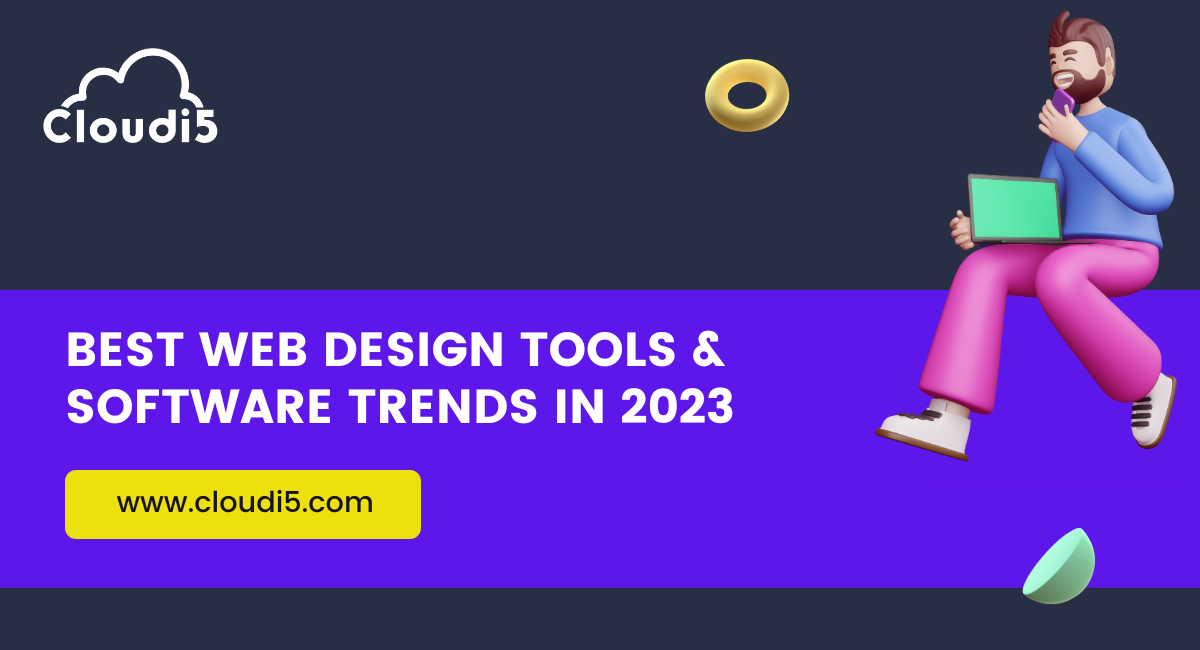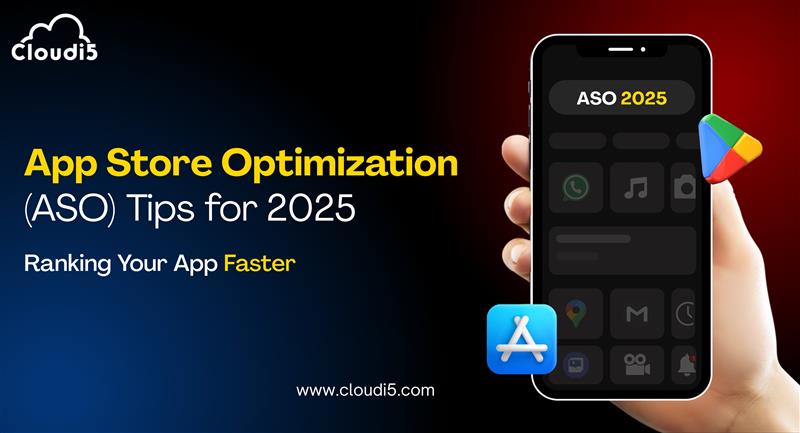
Best Web Design Tools And Software Trends In 2023
BEST WEB DESIGN TOOLS AND SOFTWARE TRENDS IN 2023
Welcome to the world of web design.
As we begin this exciting journey into 2023, we must arm ourselves with the newest hardware and software.
This blog post will explain the best web design tools and software trends that you, our tech-savvy audience, need to know about.
What is a Web Design Tool?
A web design tool is software that aids designers and developers in the creation, editing, and management of websites' visual and interactive elements.
The construction of layouts and prototypes, as well as coding and device optimization, are all accelerated by the use of these tools, which also offer a number of other features and functionalities.
How to choose the Best web design tools in 2023?
Before choosing the popular web design tool, you should consider some design preferences, skill levels, project requirements, and the features offered by the tools.
Here is a guide to help you choose the best web design tools for your web design services based on your requirements in 2023 :
- Understanding your requirements- Define your project's exact requirements. Decide whether you are designing a simple personal website, an e-commerce website or a blog.
- Determine Your Skill Level- Consider your level of design and coding expertise. Some tools cater to novice designers and developers, while others cater to advanced designers and developers. Select a tool that corresponds to your skill level.
- Research Tools- Different design techniques require different tools. Choose a tool that ranges within your requirements.
- Examine the capability- Check whether your tool is suitable for your operating system and browser of choice. Compatibility concerns can stymie your productivity.
- Examine the Available Options- Check whether your tool has pre-designed templates, responsive design capabilities, typography options, image editing, animation support and more.
- Performance and speed- A quick and responsive design tool can boost productivity. Slow software can be aggravating and time-consuming, particularly for large projects.
- Scalability- Consider a tool that can manage rising complexity without sacrificing performance if you anticipate working on larger projects in the future.
- Cost integration- Compare the price of other various tools. Some provide free, limited-feature versions, while others need a subscription or one-time purchase.
- Security and Privacy- Check that the tool's security safeguards meet your needs, especially when working on sensitive tasks.
There is a web design tool out there for you, no matter what your needs, skills, or budget are. Spend some time considering your possibilities and pick the program that will assist you in building the website of your dreams.
Popular web design tools in 2023:
Here are some web design tools in the software industry:
Adobe XD- Adobe XD is a vector-based web design tool for web and mobile applications. It was developed and published by Adobe Inc. It is a new and emerging web designing tool.
Adobe XD provides a great variety of factors which is used for creating interactive prototypes and User Interfaces(UI). Adobe XD helps you create a responsive layout that adjusts to multiple screen sizes, making it appropriate for both desktop and mobile projects. It is easy to create interactive prototypes using Adobe XD, which allows users to interact with your designs. It allows you to create symbols and components that can be reused throughout your designs.
| Pros | Cons |
| Adobe XD is a user-friendly application that is simple to learn and use. | Adobe XD is a subscription-based program that some users may find pricey. |
| Adobe XD is a tool capable of producing a wide range of designs, from straightforward prototypes to intricate mockups. | You'll find more features in Adobe XD than in other design programs. |
Figma- Figma is a cooperative web design tool that allows everyone to work together as a team. It is a new and emerging web design tool.
It is a vector-based design that provides various designs and features like prototypes, creating wireframes, mockups, etc. Figma is designed as a cooperative tool designed to be used as a team. Many users can work on the same project at the same time.
Figma is a vector-based web design tool in which your designs will be scalable and look sharp on any website. It creates interactive prototypes using Figma, allowing users to interact with your designs in real time.
| Pros | Cons |
| Even for beginners, Figma is a user-friendly application that is simple to understand and use. | Figma is not as robust Compared to certain design tools, such as Adobe XD or Sketch. |
| Figma provides various features of prototyping, animation, and version control. | Designers may find Figma occasionally to be frustratingly buggy. But because Figma is continually being updated and improved, these problems are typically soon fixed. |
Sketch- Sketch is a vector-based web design tool used for MacOS. It is one of the best free tools for web design. Sketch is a very popular web designer tool for its accuracy and flexibility.
It is not as cooperative as Adobe XD and Figma, but it provides a variety of features for creating high-quality designs. It is an excellent alternative for designers looking for a precise, adaptable, and efficient tool. Overall, Sketch is a powerful tool that is used for web design and web development.
| Pros | Cons |
| Sketch is a very effective application that enables rapid and simple design creation. | Sketch is less user-friendly than other applications and can be challenging for beginners. |
| You may work together in real-time on Sketch. | Sketch is a paid tool, which some users may find prohibitively expensive. |
Webflow- an online design tool called Webflow, enables users to generate and publish websites without knowing how to code. The drag-and-drop interface used by Webflow makes it simple to construct and personalize your website.
In addition, Webflow provides an e-commerce platform that enables you to run an online store.
| Pros | Cons |
| You can collaborate with others on your website using Webflow. This is a fantastic method to collect opinions on your website and collaborate with others to improve it. | For certain users, Webflow's price options are prohibitively expensive. |
| The built-in e-commerce platform provided by Webflow makes it simple to set up an online store. | For certain users, Webflow's price options are prohibitively expensive. |
Wordpress- Users can develop and administer their websites using the Content Management System called Wordpress. It is famous among both beginners and experienced designers.
Due to its simplicity, adaptability, and scalability, it is a popular option for website development.
WordPress is incredibly flexible and can be tailored to fit the unique requirements of any website.
| Pros | Cons |
| WordPress is an easily accessible Content Management System (CMS) that even those without coding knowledge may utilize. | It can be difficult if you desire to customize WordPress beyond the default features. |
| WordPress is a safe Content Management System (CMS) that gets regular security updates. | Security measures must be taken because WordPress websites are frequently targeted by hackers. |
Wix- Wix is a drop-and-drag website tool allowing users to generate and publish websites without coding knowledge. You may also access the code if you wish to make adjustments or further modify your website.
Wix offers various templates and factors in which you can create your website. Wix is very beneficial for Web Page Design.
| Pros | Cons |
|
Particularly for new users, Wix's pricing levels are relatively reasonable. |
Wix is not as SEO-friendly as some other website builders, including WordPress. |
| You can create your website using one of the many templates available on Wix. | Customer service: Wix's customer service isn't as good as some other website builders. |
Canva- Users can create designs using Canva's graphic design platform without having any prior design knowledge. Canva provides a wide range of features that can be used to create a good user experience design (UX).
Canva provides a great variety of design elements, including text, images, icons, shapes, backgrounds and more.
Here are some of the pros and cons of using Canva for website development:
| Pros | Cons |
| Canva is a simple website builder that doesn't require any coding expertise. | When compared to other website builders, Canva provides limited features. |
|
You may quickly and easily design websites using Canva's library of templates. |
Canva is not appropriate for building sophisticated, complicated websites. |
Adobe Photoshop- Adobe Photoshop is a bitmap graphics editor that was expanded and Published by Adobe Inc. for Windows and macOS. It is one of the best web design tools.
You can edit each layer separately with Photoshop since it allows you to work with photos in layers. Brushes, pens, and erasers are just a few of the tools that may be used in Photoshop to edit and transform photos.
| Pros | Cons |
| Photoshop is a potent image editing program that can be used in a variety of ways to produce and alter images. | The cost of using Photoshop, which is a subscription-based program, varies depending on the user. |
| Photoshop is quite accurate, so you can be sure that your photographs will turn out just how you want them to. | Photoshop can be challenging for new users. Photoshop has a lot of features, and learning them all can take some time. |
Adobe Illustrator- It is a well-known tool that is used for creating logos, icons, illustrations and other graphics that need to be expandable.
The visuals in Illustrator are created using a vector-based method. Thus, rather than using pixels, the images are composed of mathematical calculations. A powerful program that can be used to generate a wide range of visuals is Adobe Illustrator.
| Pros | Cons |
| Software like Adobe Illustrator is adaptable and can be used for a range of tasks, including print, web, and mobile design. | For beginners, Adobe Illustrator might be challenging. |
| Illustrator is simple to use, especially for new users. | Compared to several other vector graphics programs, Adobe Illustrator is not as responsive on mobile devices. |
Bootstrap- HTML, CSS, and JavaScript components are all included in the free and open-source toolkit known as Bootstrap. Because it makes it simple to construct responsive websites that appear nice on all platforms, it is a popular option for web designers.
Bootstrap is very beneficial for web page designs. Bootstrap is easy to learn, even for beginners. It is responsive, which means that it can be used to create websites that look good on all devices.
| Pros | Cons |
| Since Bootstrap is an open-source framework, anyone can use and alter it for free. |
For beginners, in particular, Bootstrap might be challenging. |
| Bootstrap can be used to develop websites that look considerable on desktop computers, laptops, tablets, and smartphones because it is a responsive framework. | Bootstrap can be used to develop websites that look considerable on desktop computers, laptops, tablets, and smartphones because it is a responsive framework. |
The best tool for you will be determined by your budget, skill level, and requirements. Conduct some research and test out a few different tools before deciding which one is best for you.
The Future of Web Designs in 2023:
The future of Web Design is shaped by the following trends:
The growth of artificial intelligence- Many web design chores, including producing code, making wireframes, and testing websites, are being automated with the help of Artificial Intelligence.
The growth popularity of low code/no code platform- Low Code/No code platforms make it possible for non-technical users to create websites without writing code.
The increasing importance of responsive design- Websites that look nice on computers, cellphones, and other mobile devices are called responsively designed.
The demand for immersive experiences- Websites must now provide users with more immersive experiences, such as Augmented Reality (AR) and Virtual Reality (VR).
The need for more Security- Websites are becoming more vulnerable to hackers as they get more complicated. In order to defend websites against assault, web design tools will need to be able to incorporate security measures.
WEB DESIGN SOFTWARE TRENDS IN 2023
Technology's quick improvements have had a big impact on trends in website design. The latest technology in the software industry is always changing. Design elements and characteristics that were previously thought to be cutting-edge are now outdated and overused.
Here are some of the trends in web design software for 2023:
Low Code/ No code development- In Web Design, Developers can create applications without writing code thanks to low-code and no-code development platforms. This makes it simpler for non-technical users to construct applications while also saving time and money.
The Growth of Artificial Intelligence- Web design is being rapidly transformed by artificial intelligence (AI). A wide range of software applications use AI, which is becoming more and more potent. For instance, chatbots, spam filters, and facial recognition software can all be powered by AI.
Blockchain- Blockchain is a type of shared ledger technology that may be used to securely and publicly record transactions. It can be used to increase websites' security, effectiveness, and transparency, making it a potential technique for web design. Many different applications, including supply chain management and financial services, make use of it.
Cyber Security- As people and organizations depend more on technology, Cyber security is becoming more and more crucial. Software that can fend off Cyber attacks will be in greater demand.
CONCLUSION:
These are just a few of the 2023 trends in web design. New patterns will develop as the web keeps developing. Businesses need to keep up with the most recent trends in order to create websites that are effective and engaging.
For more web design insights, hop over to our latest post on Web Design Blog You won't want to miss it!
Trusted By












Leave Comments